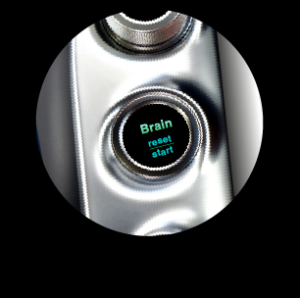Different brainwaves
What they represent and how they impact your brain and behavior
Delta
Theta
Delta brainwaves are the slowest frequency of brain activity, typically ranging from 0.5 to 4 Hz. They are most commonly associated with deep sleep, restorative processes, and unconscious states. Delta waves are important for healing, growth, and overall physical and mental rejuvenation.
Theta brainwaves range from 4 to 8 Hz and are associated with deep relaxation, meditation, creativity, and the early stages of sleep. They are often present during light sleep, daydreaming, or deep states of relaxation, and are linked to intuition, emotional processing, and memory consolidation..
High Delta
High Theta
Excessive Delta activity, particularly while awake, can indicate issues such as brain fog, memory problems, or a lack of mental clarity. It may also be linked to conditions like depression or chronic fatigue, as the brain might be in a state too similar to deep sleep, even when it should be alert.
Excessive Theta activity, especially when awake, can lead to a lack of focus, mental fog, and difficulty staying alert or grounded. It may also be connected to daydreaming, excessive emotional reactivity, or even problems with memory retention and cognitive function if it dominates during waking hour
Low Delta
Too little Delta activity may be associated with difficulty in achieving restorative sleep or deep relaxation. This could lead to problems such as insomnia, stress, or mental exhaustion, as the body and mind may not be able to enter the deep, healing stages of rest needed for optimal health.
Low Theta
Insufficient Theta activity may indicate difficulty in relaxing, meditating, or accessing creative and intuitive states. It can result in heightened stress, mental rigidity, or an inability to deeply connect with emotions and unconscious thought processes. A lack of Theta waves can also hinder restful sleep and the ability to process emotions effectively.
Alfa
Beta1
Alpha brainwaves range from 8 to 12 Hz and are typically associated with states of relaxation, calm focus, and light meditation. They occur when the mind is awake but relaxed, often during moments of creativity, reflection, or when you’re in a relaxed yet alert state, like daydreaming or light meditation. Research shows that increasing the production of alpha waves can reduce stress and anxiety.
Beta1 brainwaves range from 12 to 15 Hz and are associated with active thinking, focus, problem-solving, and alertness. This frequency is commonly present when you’re engaged in mental tasks, working, or processing information actively, as well as when you’re fully alert and concentrating.
High Alfa
High Beta1
High Alpha waves are linked to a calm, yet alert state of mind. They promote creativity, relaxation, and a sense of well-being, helping you feel focused without feeling stressed or overwhelmed. Too much High Alpha activity, however, may lead to a relaxed but disengaged state, making it harder to stay mentally sharp
High Beta1 waves are associated with heightened alertness, stress, and excessive mental activity. While they can boost focus and cognitive performance in the short term, an overabundance of High Beta1 activity may lead to anxiety, restlessness, and difficulty relaxing, making it harder to switch off or maintain mental clarity
Low Alfa
Low Beta1
Low Alpha waves are linked to heightened stress, anxiety, and difficulty achieving relaxation. A lack of Alpha activity can make it harder to enter states of calm focus or meditation, leading to restlessness, overstimulation, or an inability to achieve a balanced mental state.
Low Beta1 waves may indicate a lack of focus, motivation, or alertness. It can lead to difficulties in concentration, mental sluggishness, or a feeling of being disengaged. Insufficient Beta1 activity may make it challenging to complete tasks efficiently or stay alert during active, demanding situations..
Beta2
Beta3
Beta2 brainwaves range from 15 to 30 Hz and are associated with high-level cognitive functioning, such as intense focus, problem-solving, and mental activity. This frequency is typically present when you’re actively analyzing information, engaging in complex tasks, or when the brain is in a state of alertness and concentration.
Beta3 brainwaves range from 30 to 40 Hz and are associated with heightened focus, intense concentration, and mental alertness. This frequency is typically present during moments of critical thinking, problem-solving, and active decision-making. Beta3 is linked to the brain’s ability to process complex information quickly and efficiently.
High Beta2
High Beta3
Excessive Beta2 activity can lead to overstimulation, anxiety, and mental fatigue. When Beta2 is too dominant, it may result in excessive stress, racing thoughts, or an inability to relax. It can make it difficult to unwind or shift from a state of intense mental effort, potentially leading to burnout or cognitive overload
Excessive Beta3 activity can lead to mental exhaustion, anxiety, and stress. When Beta3 waves are too dominant, it may cause cognitive overload, difficulty relaxing, or heightened feelings of agitation. It can also impair the ability to think clearly and make decisions without feeling overwhelmed.
Low Beta2
Low Beta3
Low Beta2 waves can indicate difficulty with focus, concentration, or cognitive processing. It may lead to a lack of mental sharpness, problems with staying engaged in tasks, or an inability to process information efficiently. Low Beta2 activity can make it harder to remain alert and productive in demanding situations.
Low Beta3 activity may indicate difficulty with maintaining sharp focus or responding quickly to complex tasks. It can lead to sluggish thinking, decreased mental agility, or a lack of engagement in challenging situations. Insufficient Beta3 waves might make it harder to stay alert or process information effectively in high-stress or demanding environments.
Gamma
Low Gamma
Gamma brainwaves range from 40 Hz and above and are associated with high-level cognitive functions such as peak focus, problem-solving, learning, and memory. Gamma waves are often linked to moments of insight, deep concentration, and the brain’s processing of complex information.
Low Gamma activity may indicate difficulty in processing complex tasks, low cognitive performance, or a lack of mental clarity. It can result in reduced memory function, lower mental sharpness, or an inability to focus deeply. Low Gamma waves might make it harder to engage in tasks that require high-level thinking, learning, or creativity.
High Gamma
To much or to little?
Excessive Gamma activity can lead to mental overload, anxiety, and difficulty relaxing. When Gamma waves are too dominant, it may result in overstimulation, restlessness, or an inability to switch off from intense mental tasks. In extreme cases, it can contribute to heightened stress or even cognitive fatigue.
Every brain is unique, and Neurofeedback tailors treatment to your specific needs. By analyzing your brainwave activity, we compare it to established standards (such as age, eyes open, eyes closed) and assess how your brain functions in real time. This personalized approach helps us identify imbalances and create a customized protocol to optimize your brainwave patterns, improving focus, relaxation, sleep, and more.

